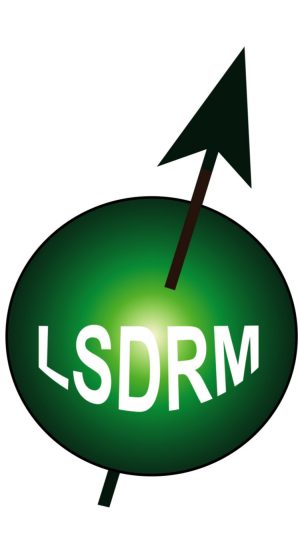Developping NMR methodology for nuclear waste glasses
Complex aluminoborosilicate nuclear glasses are used in France to confine high level – long lived radioactive wastes. These glasses are aimed to be stored in a deep geological environment, they must therefore be able to resist internal irradiation and external water alteration over very long periods, until their radioactivity reaches that of the natural environment. To address these long term behavior issues of nuclear glasses, in addition to studies of the structure of complex glasses [1,2] in relationships to their elaboration, we have being continuously developing and applying solid state NMR. Long term behavior of nuclear-related Cementitious materials are also in the scope of our studies.[3,4].

Solid-state NMR was shown to be particularly powerful to investigate radiation effects in borosilicate glasses, especially in highlighting the analogies with high-rate quench effects: decrease of boron coordination (from BO4 to BO3) in conjunction with a higher fictive temperature, significant increase of NMR spectra line widths demonstrating increased disorder and change in the polymerization degree of the network.[5-7] Recently, NMR experiments were carried out on a radioactive glass (244Cm-doped, in collaboration with the JRC-Karlsruhe, Germany) enabling for the first time a multinuclear NMR analysis of self-irradiation damages in a borosilicate glass.[8] The observation of reduced damage (versus single particle external irradiation) highlighted the specific role of multi-particle irradiations inducing recovery mechanisms.
Recent References
[1] Angeli, F.; Charpentier, T.; Molières, E.; Soleilhavoup, A.; Jollivet, P.; Gin, S. Influence of Lanthanum on Borosilicate Glass Structure: A Multinuclear MAS and MQMAS NMR Investigation. J. Non-Cryst. Solids 2013, 376, 189–198.
[2] Quintas, A.; Caurant, D.; Majérus, O.; Loiseau, P.; Charpentier, T.; Dussossoy, J.-L. ZrO 2 Addition in Soda-Lime Aluminoborosilicate Glasses Containing Rare Earths: Impact on Rare Earths Environment and Crystallization. J. Alloys Compd. 2017, 719, 383–391.
[3] Auroy, M.; Poyet, S.; Le Bescop, P.; Torrenti, J.-M.; Charpentier, T.; Moskura, M.; Bourbon, X. Impact of Carbonation on Unsaturated Water Transport Properties of Cement-Based Materials. Cem. Concr. Res. 2015, 74, 44–58.
[4] Auroy, M.; Poyet, S.; Le Bescop, P.; Torrenti, J.-M.; Charpentier, T.; Moskura, M.; Bourbon, X. Comparison between Natural and Accelerated Carbonation (3% CO2): Impact on Mineralogy, Microstructure, Water Retention and Cracking. Cem. Concr. Res. 2018, 109, 64–80.
[5] Peuget, S.; Fares, T.; Maugeri, E. A.; Caraballo, R.; Charpentier, T.; Martel, L.; Somers, J.; Janssen, A.; Wiss, T.; Rozenblum, F.; et al. Effect of 10B(n, α)7Li Irradiation on the Structure of a Sodium Borosilicate Glass. Nucl. Instrum. Methods Phys. Res. Sect. B Beam Interact. Mater. At. 2014, 327, 22–28.
[6] Peuget, S.; Maugeri, E. A.; Charpentier, T.; Mendoza, C.; Moskura, M.; Fares, T.; Bouty, O.; Jégou, C. Comparison of Radiation and Quenching Rate Effects on the Structure of a Sodium Borosilicate Glass. J. Non-Cryst. Solids 2013, 378, 201–212.
[7] Mendoza, C.; Peuget, S.; Charpentier, T.; Moskura, M.; Caraballo, R.; Bouty, O.; Mir, A. H.; Monnet, I.; Grygiel, C.; Jegou, C. Oxide Glass Structure Evolution under Swift Heavy Ion Irradiation. Nucl. Instrum. Methods Phys. Res. Sect. B Beam Interact. Mater. At. 2014, 325, 54–65.
[8] Charpentier, T.; Martel, L.; Mir, A. H.; Somers, J.; Jégou, C.; Peuget, S. Self-Healing Capacity of Nuclear Glass Observed by NMR Spectroscopy. Sci. Rep. 2016, 6 (1).
Other applications of ssNMR concerns the glass chemical durability and more specifically the elucidation of the structure of the passivating alteration layer (a nanoporous material referred to as alteration gel) that forms on the glass surface after the initial step of glass dissolution followed by recondensation of a silicate network, with mechanisms that are still debated [9,10]. Using oxygen-17 as a specific probe of this layer after alteration isotopically enriched water, we could study the influence of lanthanum as well the impact of glass heterogeneities such as crystallization on the alteration gel structure and glass dissolution dynamics [11-13].
Recent References :
[9] Gin, S.; Jollivet, P.; Fournier, M.; Angeli, F.; Frugier, P.; Charpentier, T. Origin and Consequences of Silicate Glass Passivation by Surface Layers. Nat. Commun. 2015, 6, 6360.
[10] Collin, M.; Fournier, M.; Frugier, P.; Charpentier, T.; Moskura, M.; Deng, L.; Ren, M.; Du, J.; Gin, S. Structure of International Simple Glass and Properties of Passivating Layer Formed in Circumneutral PH Conditions. Npj Mater. Degrad. 2018, 2 (1), 4.
[11] Molières, E.; Angeli, F.; Jollivet, P.; Gin, S.; Charpentier, T.; Majérus, O.; Barboux, P.; de Ligny, D.; Spalla, O. Chemical Durability of Lanthanum-Enriched Borosilicate Glass. Int. J. Appl. Glass Sci. 2013, 4 (4), 383–394.
[12] Nicoleau, E.; Angeli, F.; Schuller, S.; Charpentier, T.; Jollivet, P.; Moskura, M. Rare-Earth Silicate Crystallization in Borosilicate Glasses: Effect on Structural and Chemical Durability Properties. J. Non-Cryst. Solids 2016, 438, 37–48.
[13] Nicoleau, E.; Schuller, S.; Angeli, F.; Charpentier, T.; Jollivet, P.; Le Gac, A.; Fournier, M.; Mesbah, A.; Vasconcelos, F. Phase Separation and Crystallization Effects on the Structure and Durability of Molybdenum Borosilicate Glass. J. Non-Cryst. Solids 2015, 427, 120–133.







